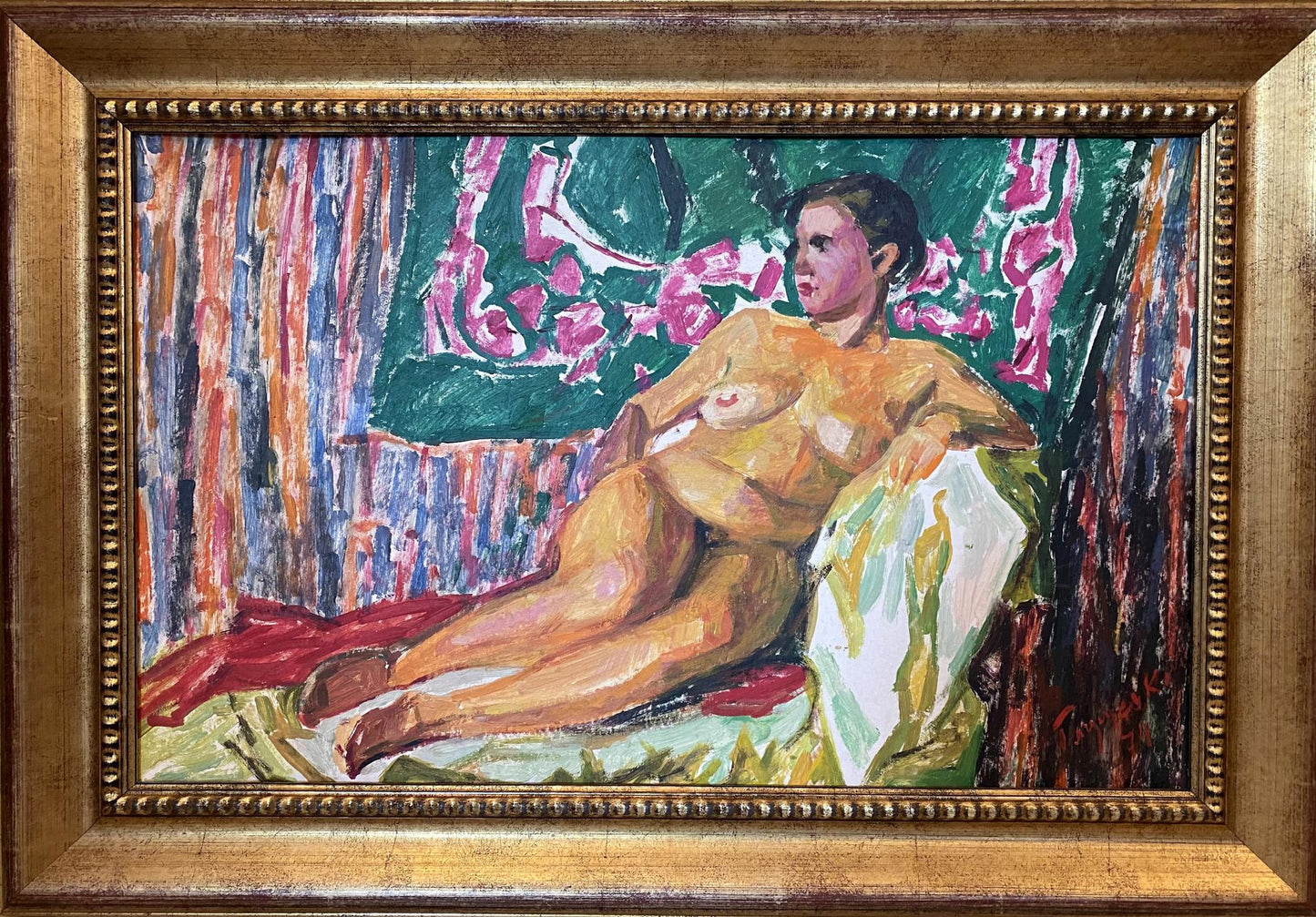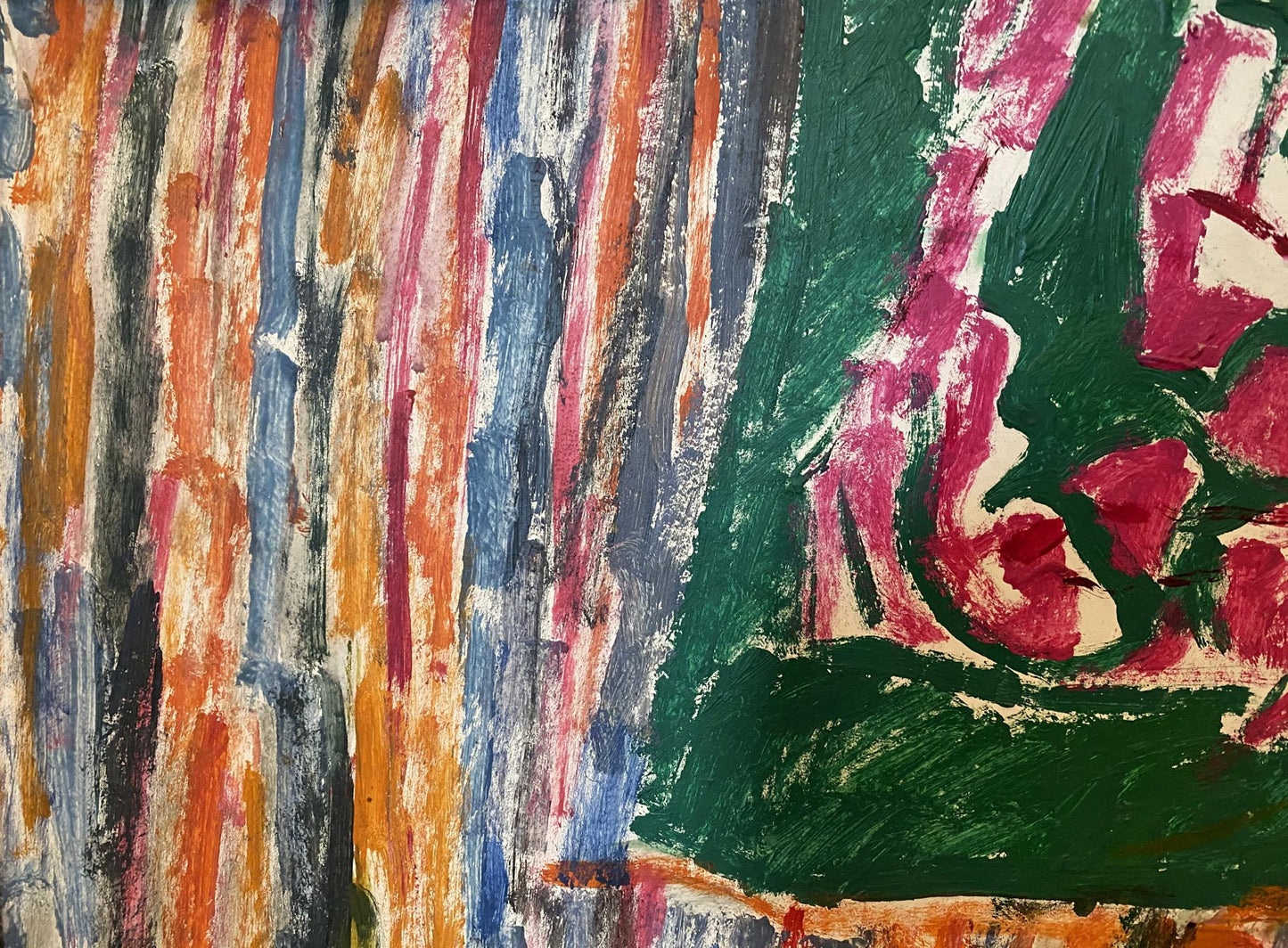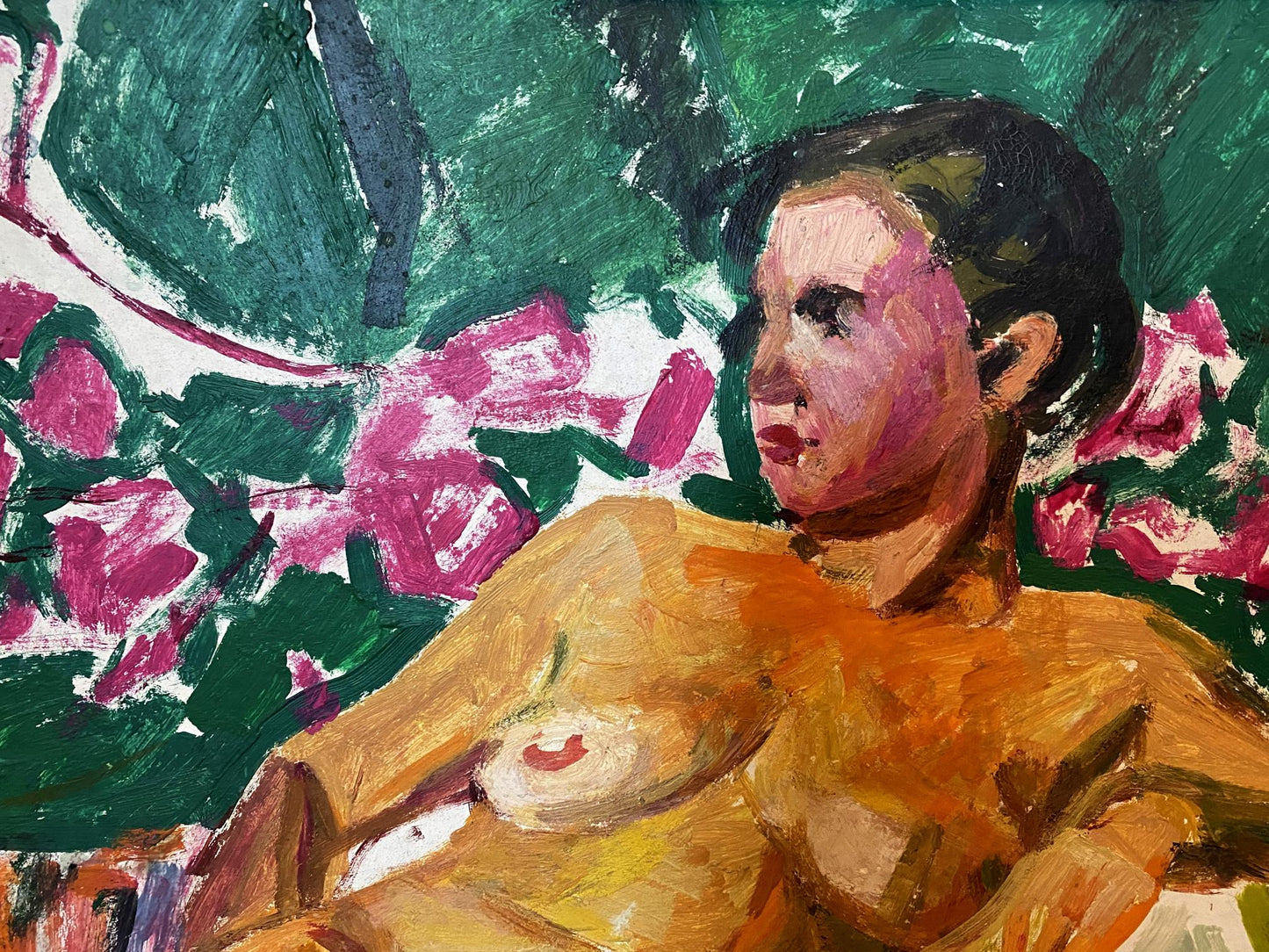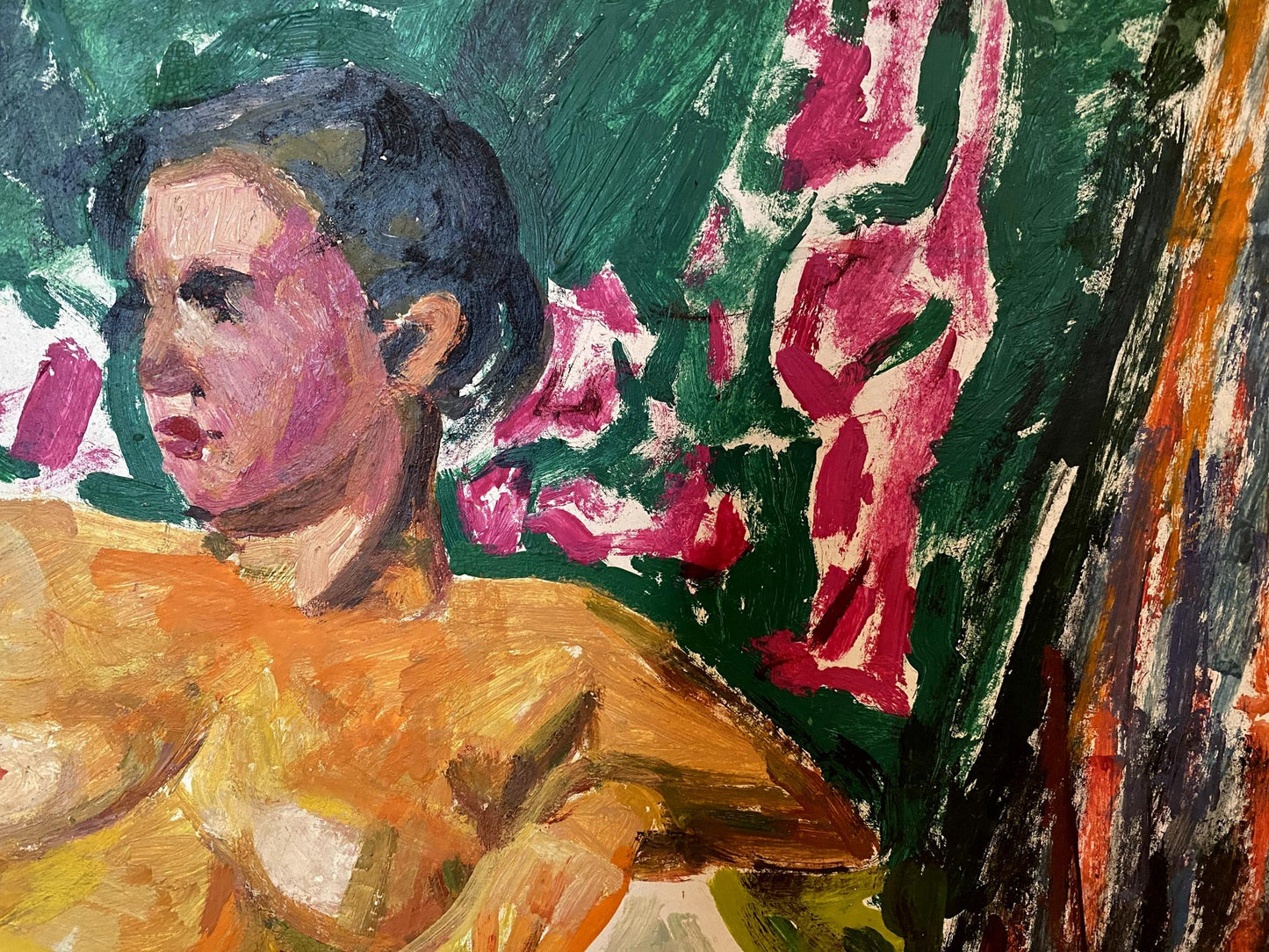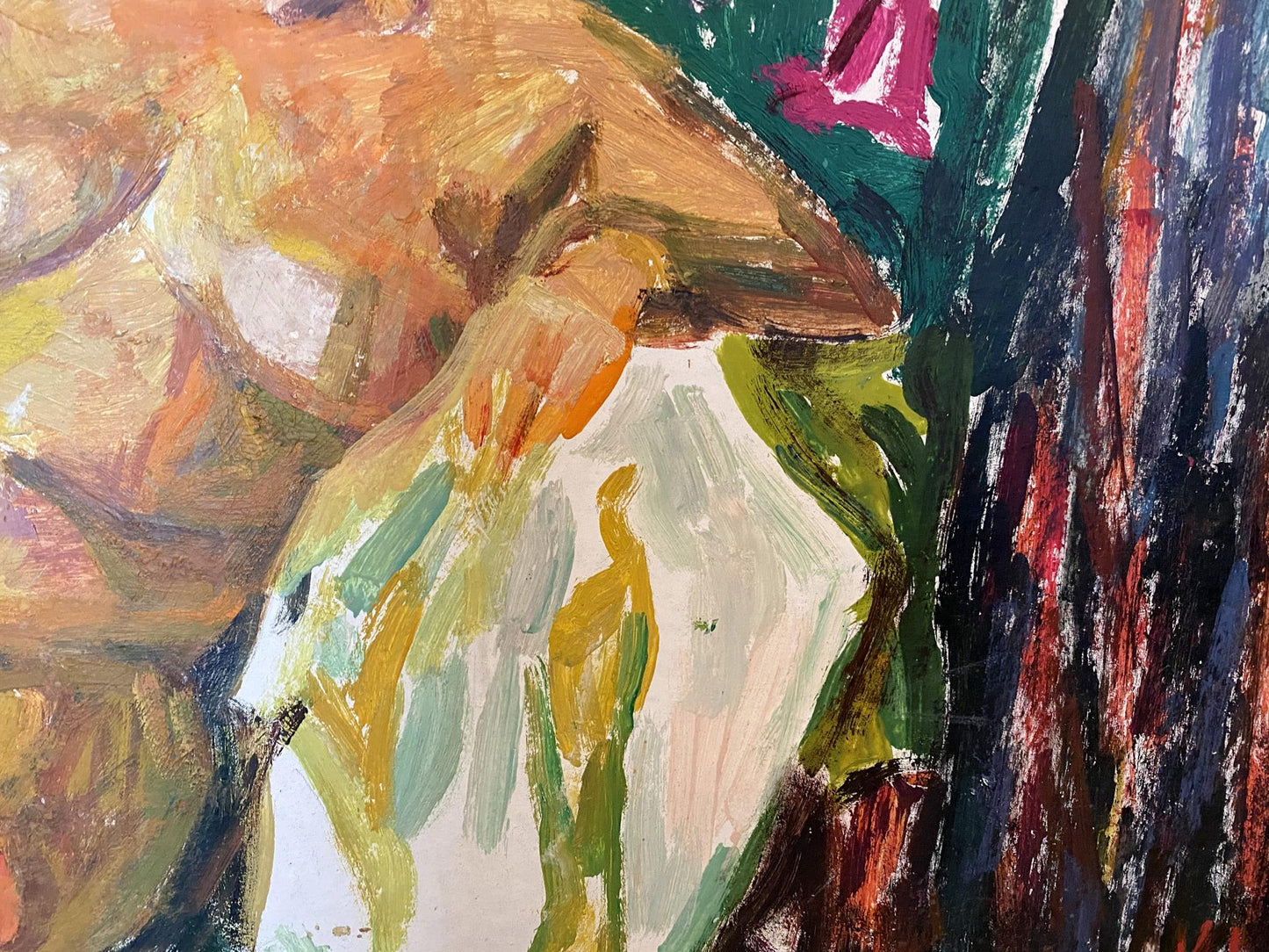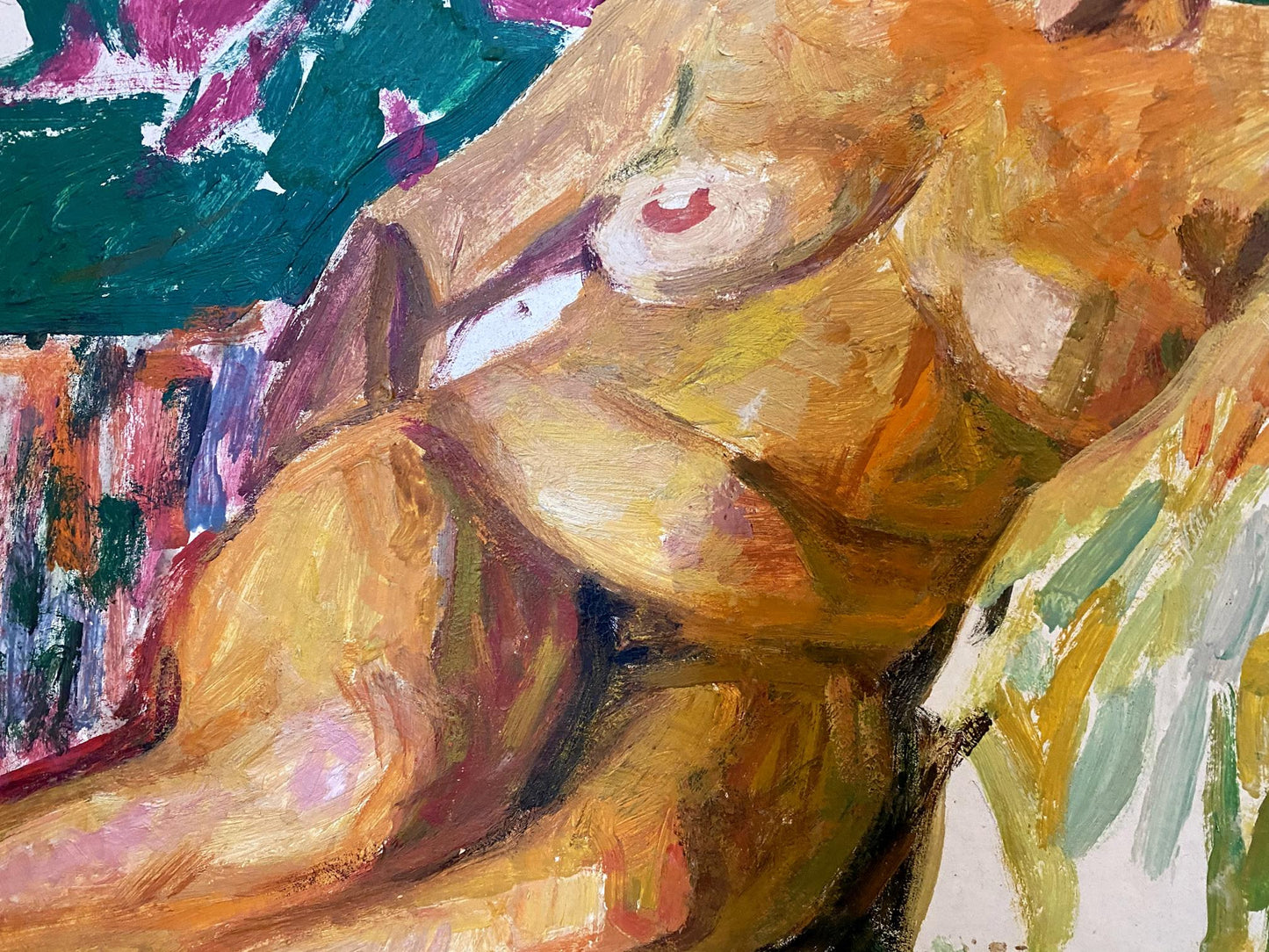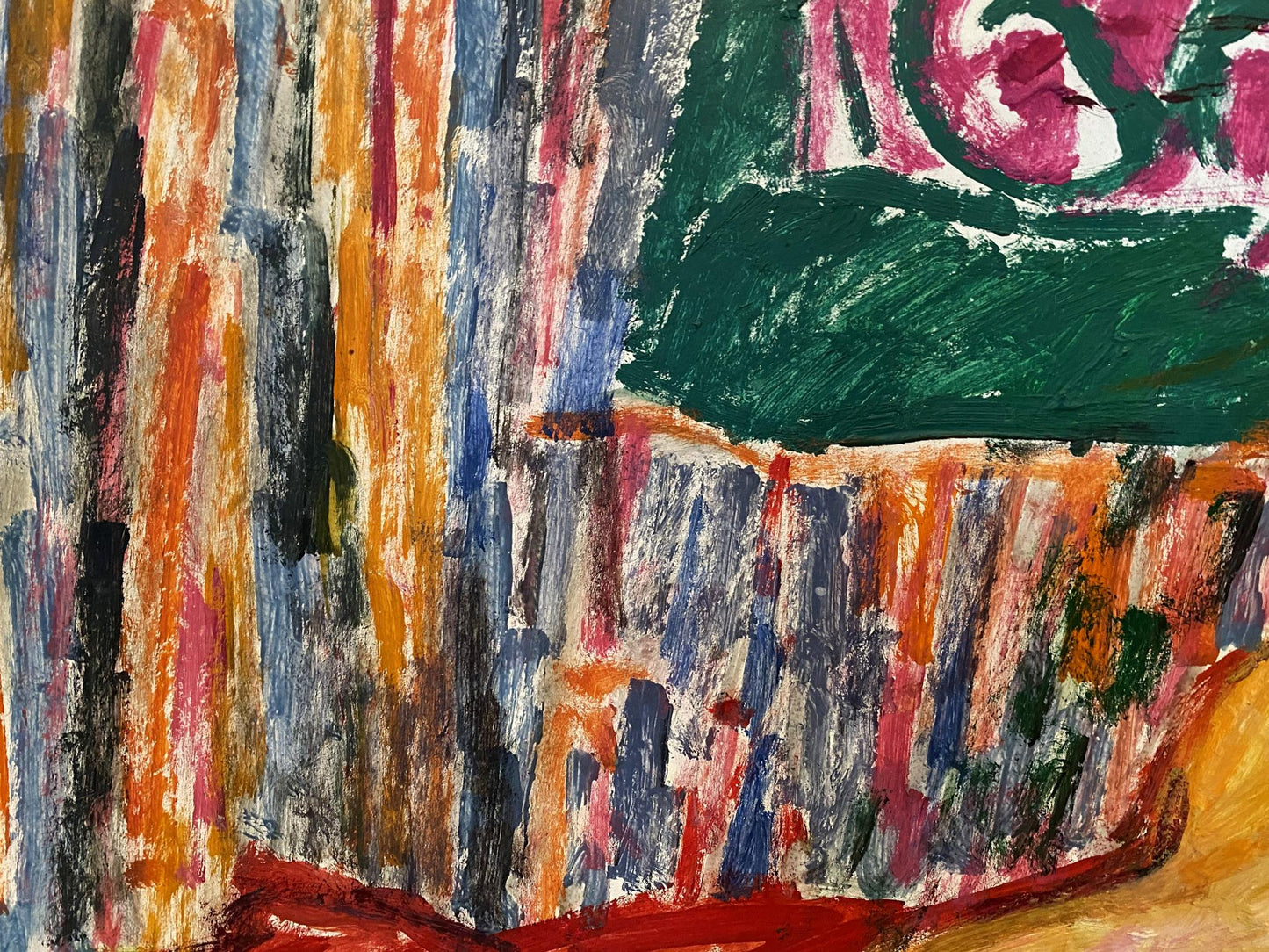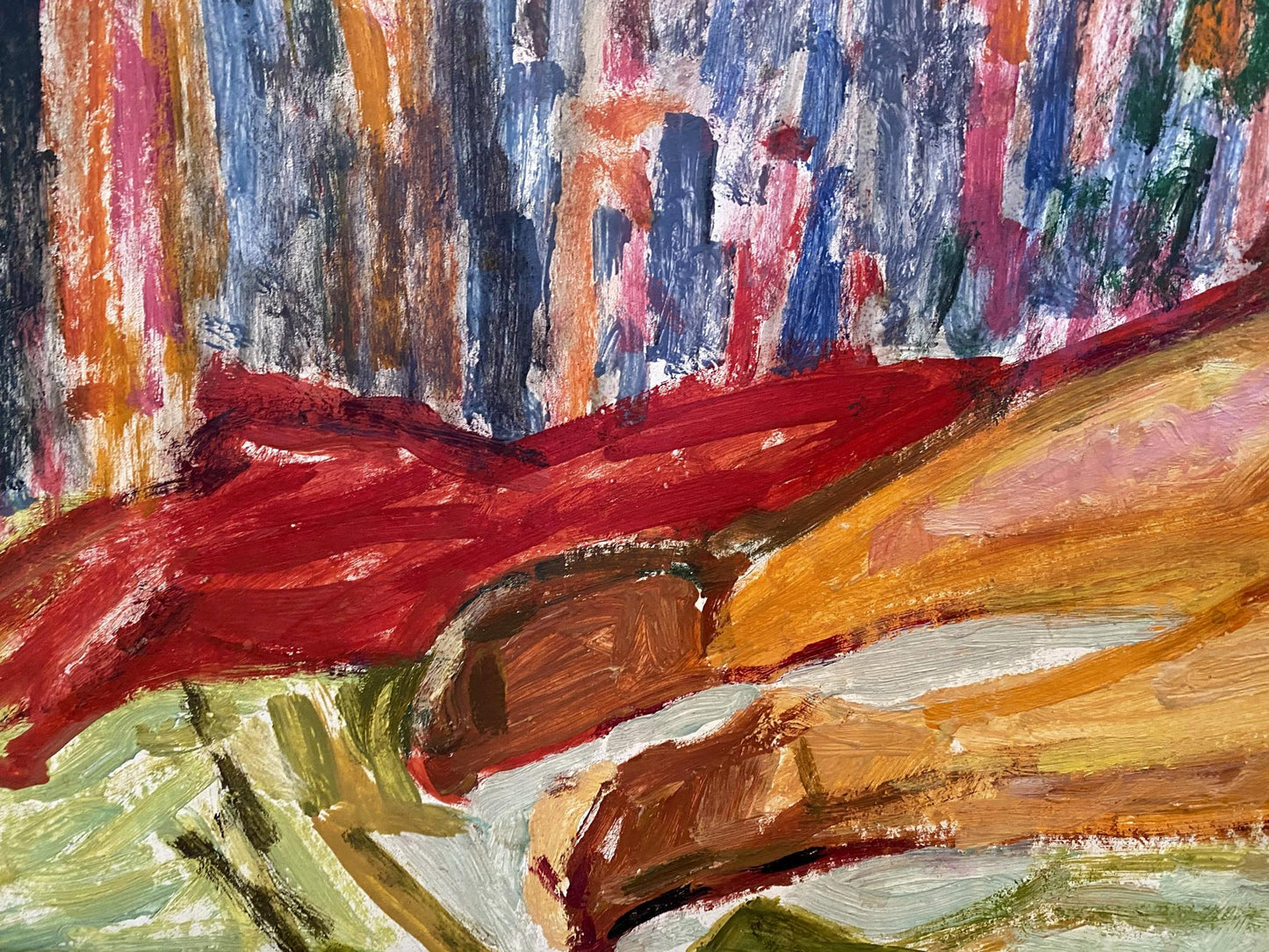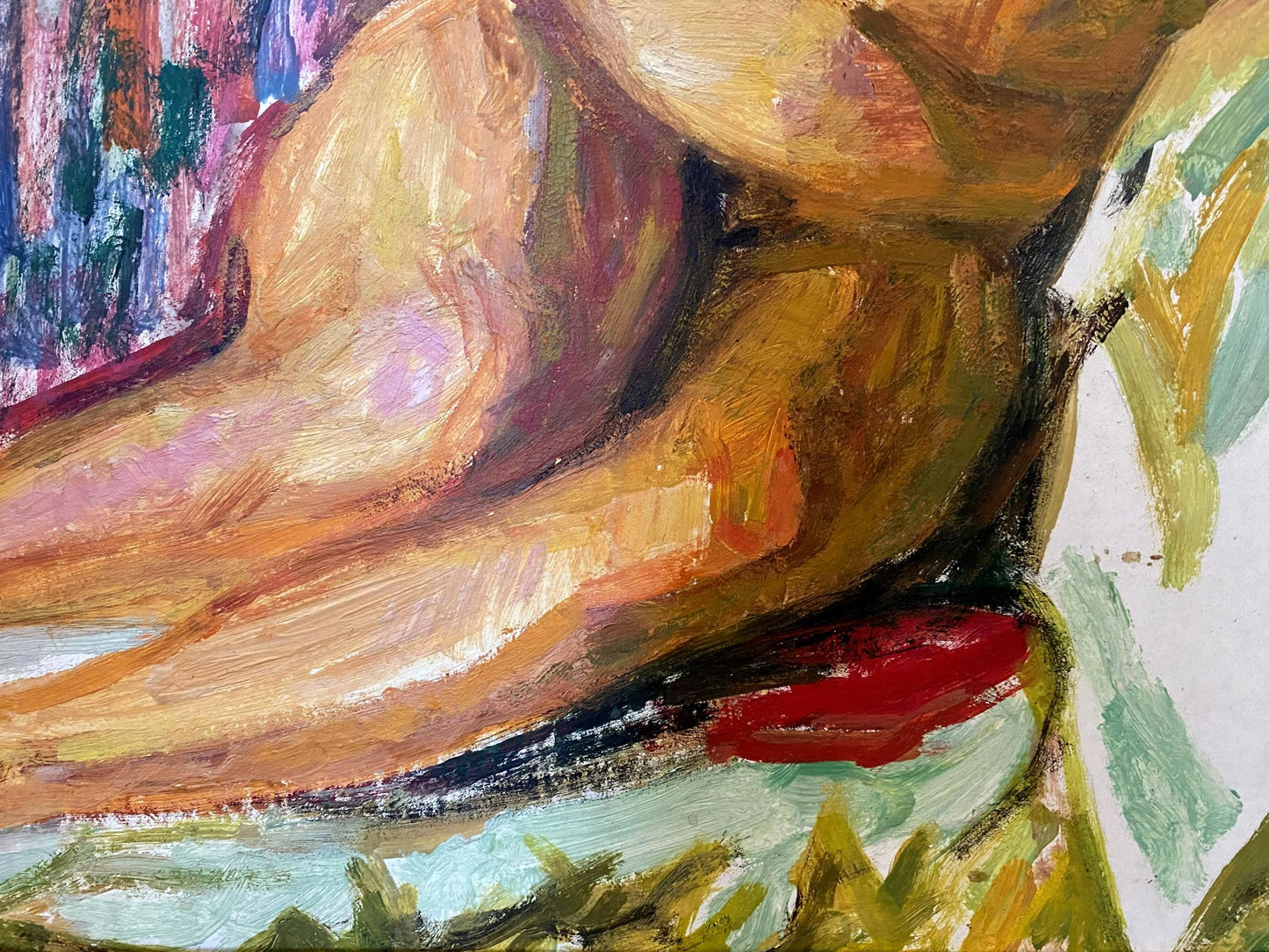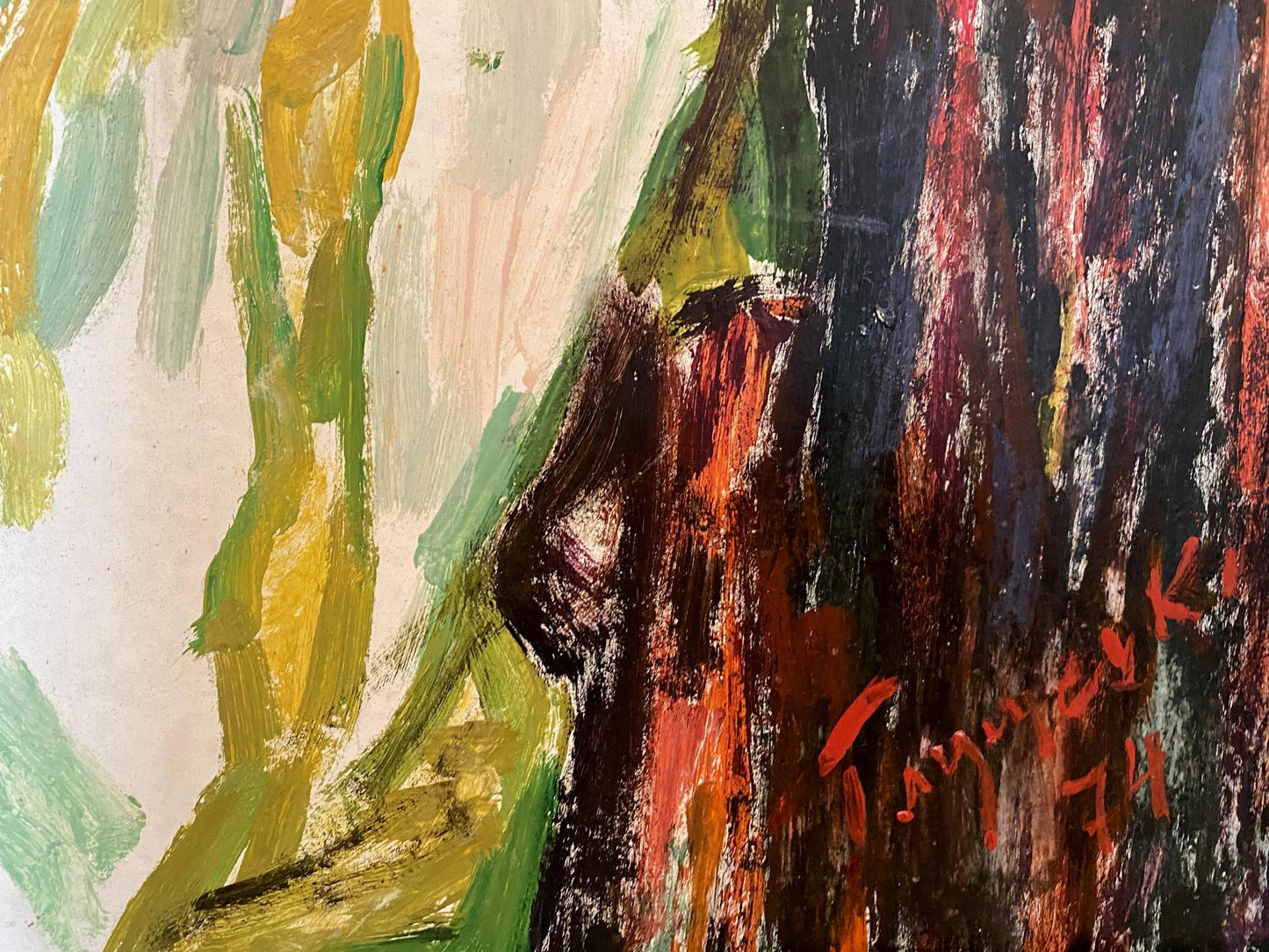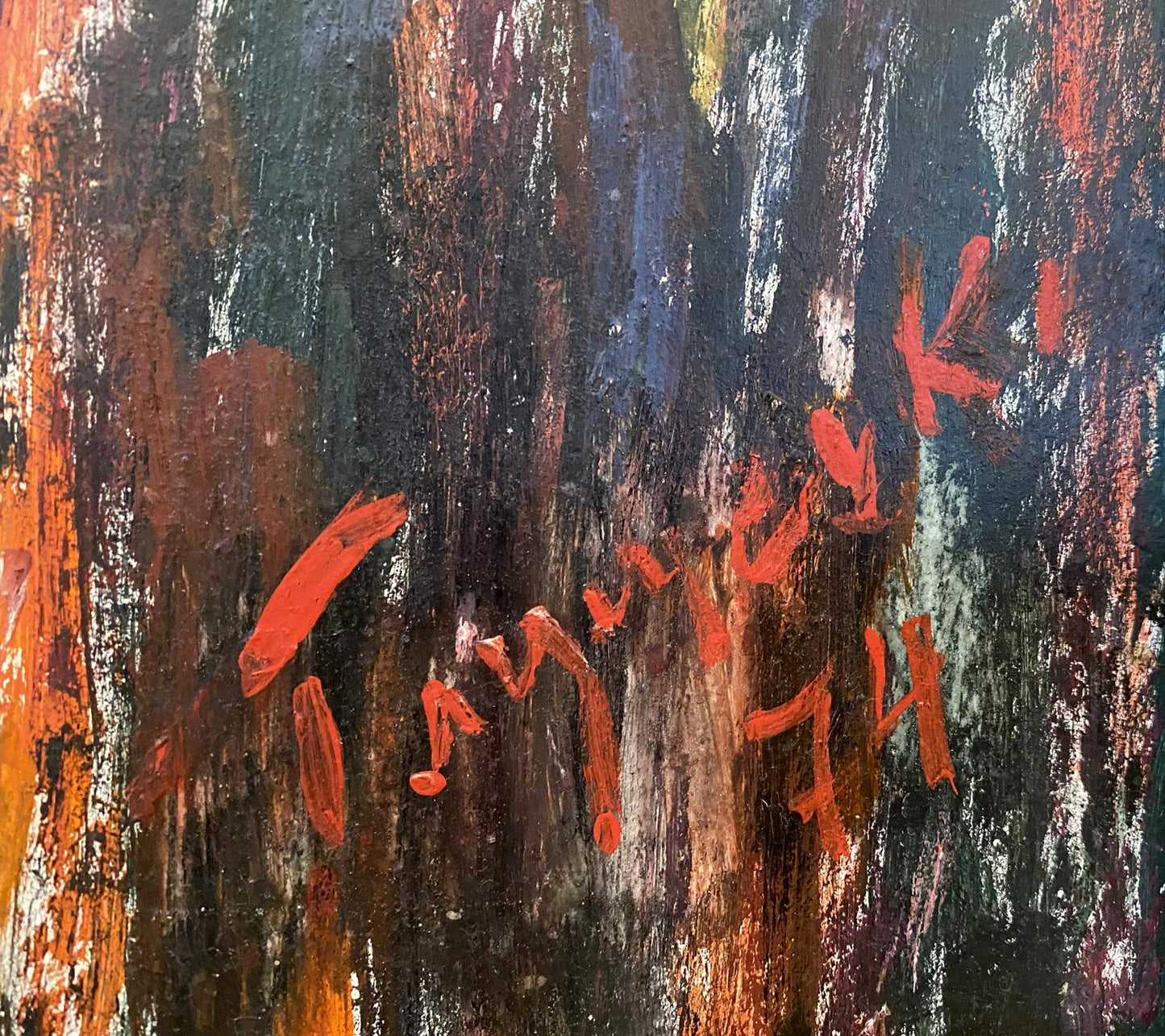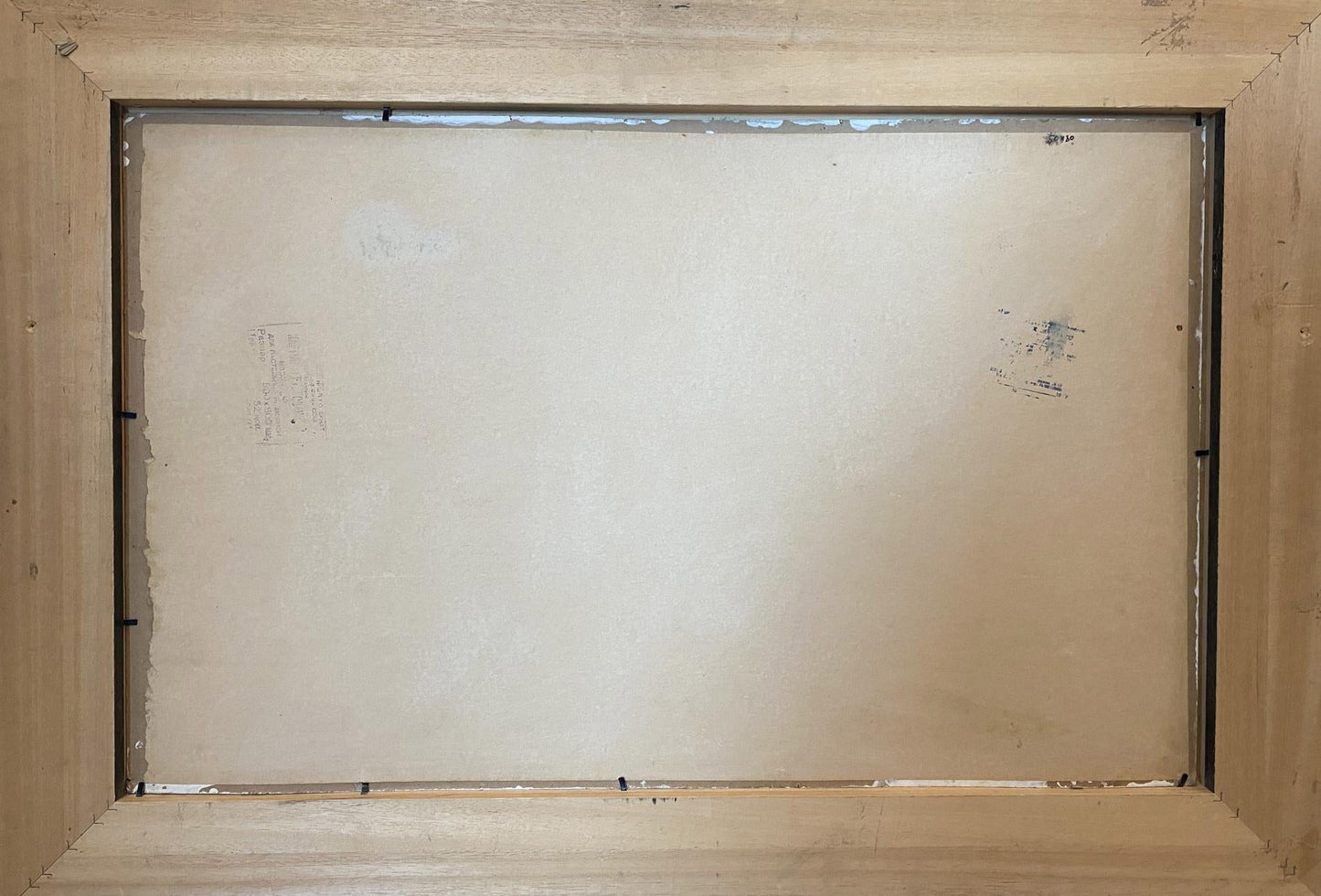1
/
of
12
Oil painting Portrait of a naked woman Glushchenko Nikolai Petrovich
Oil painting Portrait of a naked woman Glushchenko Nikolai Petrovich
SKU:Verns1285
Regular price
$19,500.00 USD
Regular price
Sale price
$19,500.00 USD
Taxes included.
№Verns 1285
*** ABOUT THIS PAINTING ***
* TITLE: "Portrait of a naked woman"
* ARTISTS: Glushchenko Nikolai Petrovich
* SIZE: 50x70 cm/'19.68x27.55 inches'
* MEDIUM: oil, canvas
* HAND PAINTED: Original painting from our collection
* CONDITION: we tried to convey the maximum information with the help of photos about this product
About the artist: Glushchenko Nikolai Petrovich was born in the city of Novomoskovsk, Yekaterinoslavskaya province (now Dnepropetrovsk region). In 1918 he graduated from a commercial school in Yuzovka (now Donetsk). Soon Glushchenko was enrolled in the Denikin Volunteer Army on mobilization. After a while, with the remnants of the White Guard units, he ended up on the territory of Poland. There he ended up in an internment camp, and from there fled to Germany. Studied at the Hans Baluschek Studio School in Berlin. In 1920-24. studied at the Berlin Higher School of Fine Arts. In 1925 he moved to Paris, where he fell under the influence of the French impressionists: C. Monet, E. Degas, A. Matisse, V. Van Gogh. He created portraits of Romain Roland and Henri Barbusse and others. He designed the Soviet pavilion at the Lyon Fair.
By the beginning of the 1930s, Glushchenko's creative image was finally formed, he appeared as a talented master with his own original face. His painting is characterized by impressionism, a subtle sense of decorative expressiveness of color and freedom of expression.
In 1934, the artist made a creative trip to Spain, the Balearic Islands and Mallorca. In 1936 he returned to Moscow, and in 1944 he moved to Kiev.
Living in Berlin and Paris, Glushchenko combined the roles of an artist and a scout. During the life of Nikolai Glushchenko, none of his acquaintances and colleagues in his work knew about his work in intelligence. He was one of those who in advance (in January 1940) informed the Soviet government about the impending attack by Nazi Germany. As you know, ignoring this information turned into a tragedy for the USSR on June 22, 1941. He received this information during an exhibition of folk art of the USSR in Berlin, at which he was the organizer.
Glushchenko worked in various genres of painting, but his favorite subject was the landscape. Such, for example, is the early series "Berlin Sketches" (1939), cycles of documentary landscapes of post-war Kiev (1944), paintings: "March on the Dnieper" (1947), "Kiev Autumn" (1950), "Thaw" (1956), " Winter Sun "(1956)," Spring in the Carpathians "(1957)," Spring near Kiev "(1961)," May Color "(1971)," May "," Sun on the Sea "(1974), cycles of landscapes from travel in Italy, France, Belgium, Switzerland and many others.
For more than thirty years, Glushchenko's art was directly associated with Ukraine. The enchanting beauty of his native land, the work of people were a constant and powerful source of his inspiration. He dedicated many paintings, sketches, drawings to his native nature, its enchanting unique beauty.
Glushchenko was awarded the Order of the Red Banner of Labor, had the title of People's Artist of Ukraine and People's Artist of the USSR, was a laureate of the State Prize. T. G. Shevchenko. The master's paintings are in many Ukrainian and foreign museums and private collections. In the 1970s, the artist was fond of the technique of monotype and created a number of beautiful floral still lifes in it.
*** ABOUT THIS PAINTING ***
* TITLE: "Portrait of a naked woman"
* ARTISTS: Glushchenko Nikolai Petrovich
* SIZE: 50x70 cm/'19.68x27.55 inches'
* MEDIUM: oil, canvas
* HAND PAINTED: Original painting from our collection
* CONDITION: we tried to convey the maximum information with the help of photos about this product
About the artist: Glushchenko Nikolai Petrovich was born in the city of Novomoskovsk, Yekaterinoslavskaya province (now Dnepropetrovsk region). In 1918 he graduated from a commercial school in Yuzovka (now Donetsk). Soon Glushchenko was enrolled in the Denikin Volunteer Army on mobilization. After a while, with the remnants of the White Guard units, he ended up on the territory of Poland. There he ended up in an internment camp, and from there fled to Germany. Studied at the Hans Baluschek Studio School in Berlin. In 1920-24. studied at the Berlin Higher School of Fine Arts. In 1925 he moved to Paris, where he fell under the influence of the French impressionists: C. Monet, E. Degas, A. Matisse, V. Van Gogh. He created portraits of Romain Roland and Henri Barbusse and others. He designed the Soviet pavilion at the Lyon Fair.
By the beginning of the 1930s, Glushchenko's creative image was finally formed, he appeared as a talented master with his own original face. His painting is characterized by impressionism, a subtle sense of decorative expressiveness of color and freedom of expression.
In 1934, the artist made a creative trip to Spain, the Balearic Islands and Mallorca. In 1936 he returned to Moscow, and in 1944 he moved to Kiev.
Living in Berlin and Paris, Glushchenko combined the roles of an artist and a scout. During the life of Nikolai Glushchenko, none of his acquaintances and colleagues in his work knew about his work in intelligence. He was one of those who in advance (in January 1940) informed the Soviet government about the impending attack by Nazi Germany. As you know, ignoring this information turned into a tragedy for the USSR on June 22, 1941. He received this information during an exhibition of folk art of the USSR in Berlin, at which he was the organizer.
Glushchenko worked in various genres of painting, but his favorite subject was the landscape. Such, for example, is the early series "Berlin Sketches" (1939), cycles of documentary landscapes of post-war Kiev (1944), paintings: "March on the Dnieper" (1947), "Kiev Autumn" (1950), "Thaw" (1956), " Winter Sun "(1956)," Spring in the Carpathians "(1957)," Spring near Kiev "(1961)," May Color "(1971)," May "," Sun on the Sea "(1974), cycles of landscapes from travel in Italy, France, Belgium, Switzerland and many others.
For more than thirty years, Glushchenko's art was directly associated with Ukraine. The enchanting beauty of his native land, the work of people were a constant and powerful source of his inspiration. He dedicated many paintings, sketches, drawings to his native nature, its enchanting unique beauty.
Glushchenko was awarded the Order of the Red Banner of Labor, had the title of People's Artist of Ukraine and People's Artist of the USSR, was a laureate of the State Prize. T. G. Shevchenko. The master's paintings are in many Ukrainian and foreign museums and private collections. In the 1970s, the artist was fond of the technique of monotype and created a number of beautiful floral still lifes in it.
Couldn't load pickup availability
